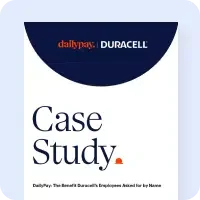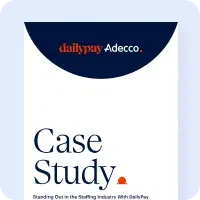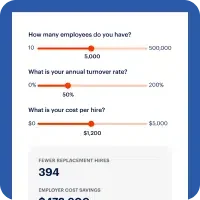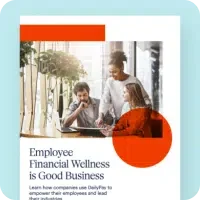The term “war for talent” was coined by McKinsey’s Steven Hankin in 1997 and popularized by a book of the same name in 2001. It refers to the rise of ever fiercer competition to recruit and retain employees when too few workers are available.
The war not only rages on to this day, those in battle are getting more desperate. A report from McKinsey called “The World at Work: Jobs, Pay, and Skills for 3.5 Billion People” reveals that by 2020 employers in Europe and North America will require 16–18 million more college-educated workers than will be available.
And yet, as Gallup reported in a 2015 survey of 80,844 American workers, more than 50% were “not engaged” and an additional 17.2% were “actively disengaged.”
Our hiring philosophy is that you must recruit to retain. This requires two things: being strategic and creative in your recruitment approaches and fostering a future-focused culture that gives each employee something to look forward to.
That’s a lot to put into a single blog post — luckily we’ve already written quite a bit about it.
The Employee Value Proposition
Today we’re going to narrow our focus to your Employee Value Proposition (EVP). When you get a resume and cover letter, that’s someone offering you their value proposition. But before they apply, and certainly before they accept a position, a prospect will want a clear picture of what’s in it for them.
According to SHRM:
“This strategic statement defines how a company wants to be perceived by its employees. It embodies the company’s values and ideals and is a fundamental step in defining an employer brand strategy for talent acquisition.”
This mission statement of employer values gives people clear reasons to come aboard, and it gives them a reason to stick around by emphasizing what employees can expect from the company and what, in turn, the company expects of them.
Effective EVPs improve engagement of new hires by up to 29%, making them more likely to stay longer and to refer other job seekers.
How To Build An Effective EVP
To be clear, these are steps you can take to build out your EVP, but there are many ways to go about it. Every company is unique, so if something is missing or redundant, understand that this is merely a descriptive process.
A well-crafted EVP will help you better attract, recruit, and retain talent. It will help you focus HR efforts to engage and re-engage your workforce. It will be the cornerstone of your employer brand. It could mean the difference between staying ahead in the competitive job market and falling behind. It comprises a promise that goes beyond pay. It’s a promise to take care of your employees so they take care of your business.
Start Reviewing Employee Engagement Data
The first step is to review your starting point. What data is available? This might include employee engagement, eNPS or other employee surveys, recruitment and retention metrics.
Make a list of your tangible offerings to employees. For tangible benefits, what is the opt-in rate? What’s the most popular benefit? What benefits do you think are unique to your company? What benefits have the lowest adoption — and why do you think that is?
And what are the intangible benefits? Balance your own perception with the survey data you’ve been able to collect. These benefits might include things like autonomy, challenging work, internal mobility, or collaborative culture.
Now, put on your marketer cap. Refer to your talent personas, and rank the tangibles and intangibles from most to least important for your current and future employees. Tactically, this gives you a list of where to focus your efforts in optimizing and promoting.
 Use Competitive Research To Form An Employee Value Proposition
Use Competitive Research To Form An Employee Value Proposition
Go beyond the information that’s readily at hand, and start actively researching across your company and competition. This phase includes interviewing key stakeholders, management, and employees. The interviews and surveys should expand upon your current lists, and they should also deepen your perspective on the bullet points you’re starting with.
In this step, you are looking to be shown what you should tell. It’s an employee-centric approach built on existing employees and current HR strategies.
In addition to eNPS-style questions, get specific. Ask employees which benefits they value most and which they use most. What makes their (current job, your company) unique from their (past jobs, former employers)? What three adjectives might they use to describe their current employment (which is vaguely worded enough to invite description of their role, responsibilities, department, or company).
Look for trends and themes in the response data. Do they track across departments, and how do departments respond differently? In addition to tailoring EVPs to different roles, this will help deepen your talent personas.
Then research the competition to be sure that the points in their EVPs aren’t too similar to your own. The point of the EVP is a hybrid of marketing and HR. You want to serve current and future employees, and you want to stand out as a unique employer of choice.
Craft Your EVP
Time to put it all together! Based on all this new research and insight, assemble a concise, conversational overarching statement that distills employer commitment and employee experience. This translates stand-out themes and points into one powerful message that reflects the truth of your HR strategy.
Though EVPs are often described as one- to three-sentence blurbs, it’s useful to remember that an EVP is actually just an honest sales pitch of reciprocal value. As such, when building out your EVP, prepare different versions of different lengths for different audiences.
For great examples of world-class employer branding, check out these case studies of L’Oreal and Nike.
Share Your EVP With A Wide Audience
When you have the pitch-perfect EVP burning a hole in your hard drive, it’s time to implement across the recruitment process and employee experience. This means job postings, onboarding, career development, employee relations, and even through exit stages. If employees leave on a good note, they’ll be more likely to report a positive employment experience.
Work the EVP into blog posts, new-hire announcements, social pages and posts, press releases about company events. Just as Nike imbues their brand in everything to the point where they don’t even have to say or write “Just Do It” on every piece of marketing collateral, your EVP should be stated and echoed throughout your company communications.
And finally, build your EVP into employee surveys and other people metrics. Try to get hard data on how you’re measuring up to your EVP — are you hitting it? Can you aspire to even greater heights? Are there areas that need more attention? Are you nailing it but finding a gap to fill?
Your EVP is a living document. It should be revisited, revised, edited, rewritten, and built upon. Dramatic changes in the employment landscape are getting faster and more dramatic with every year, and by 2020, Millennials and Generation Z will comprise nearly three-quarters of the workforce.
Now is not a time to let yourself fall behind.













 Use Competitive Research To Form An Employee Value Proposition
Use Competitive Research To Form An Employee Value Proposition